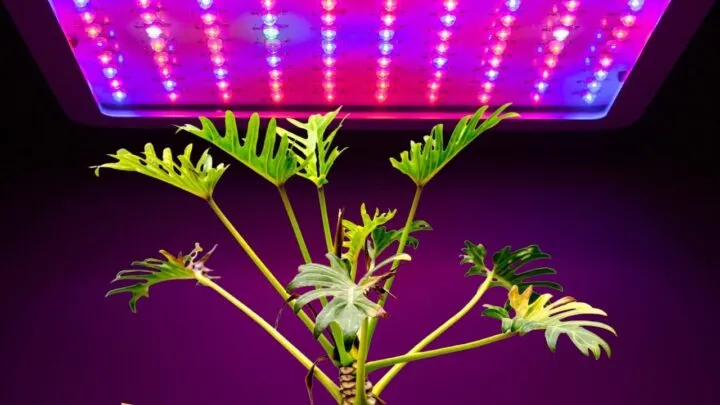If your current houseplant collection is expanding and you’re looking for strategies to increase your growing spaces, artificial lights are a great option.
They allow you to keep houseplants in places without windows or lacking in natural light. The trick to maintaining these plants lush is knowing which are the best houseplants for artificial light.
The best plants for artificial light are those that are naturally accustomed to low light conditions. Basically, any plant that has ‘does well in lower light conditions’ in tis description about light preferences.
Plants that are already used to low light will have a much easier time adjusting to artificial light. Some plants that are particularly sensitive to sunlight might even grow better under artificial light.
You’ll also want to consider what types of growing lights you might already have on hand. Bulbs with red light promote flower and fruit development while blue light encourages leaf growth.
This means that you can use artificial lights strategically to induce the type of growth you want.
Artificial grow lights can be purchased online, in garden centers, or at hardware stores. You can set them on timers so they run independently.
Now you need to choose what plants you’re going to grow under artificial light.
Find our favorites below!
Table of Contents
What are the Best Houseplants for Growing under Artificial Light?
The best houseplants for growing under artificial light are those that are already conditioned to grow in low light conditions. These include popular houseplant species such as pothos, philodendrons, peperomias, spider plants, ivy, ZZ plants, cast iron plants, dracaenas, aglaonemas, peace lilies, maidenhair ferns, and parlor palms.
1. Pothos
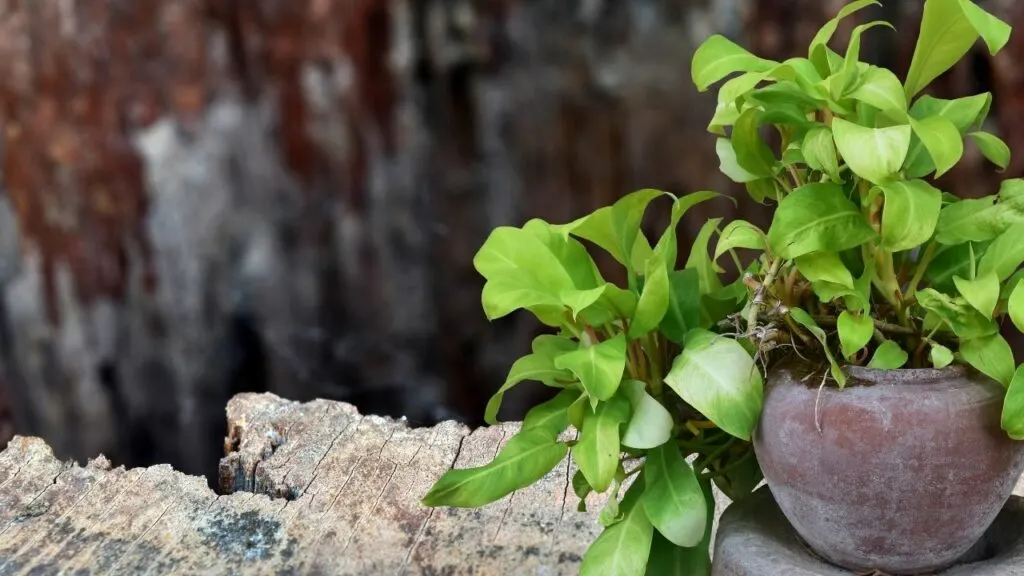
Pothos is a low maintenance and versatile plant. You can let the vines hang down from a basket, cascade down from a high shelf, or provide it with a central stake for it to climb.
It is one of the most popular houseplants and you can find varieties with variegated colors, different tones of green, and leaves of different sizes. All these variations make it so one single plant suits multiple conditions and aesthetics.
Looking for something different to stand out in a dark corner? Check out the snow queen pothos variety that features mostly white leaves. If you’re going for a more tropical forest vibe, I’d suggest looking for a silver pothos with its larger leaves in dark green and silver.
If you’re not looking to buy a new plant, no worries. A great thing about pothos is that they are super easy to propagate from cuttings.
You can snip off parts of the vine and root them to start new plants. If you already have a pothos plant in your home, this is a great option for trying to grow them under artificial lights without having to buy a new plant.
2. Philodendrons
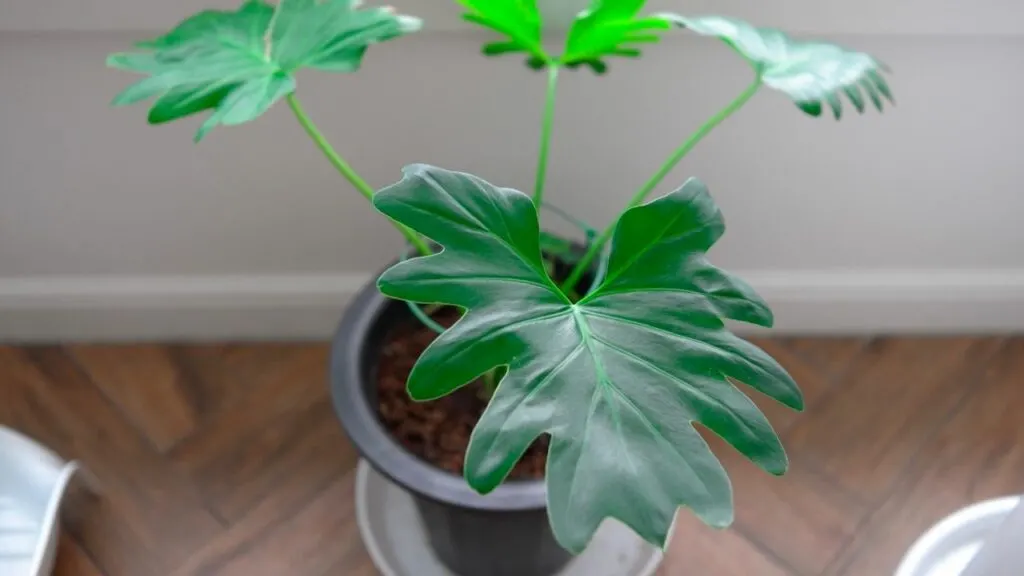
Like pothos, philodendrons are a houseplant favorite because they are so easy to care for. They withstand low light conditions and will tolerate inconsistent waterings.
Philodendrons offer so many options of shapes and colors of plants to grow under artificial light. I personally love colorful plants that stand out. Especially in a dark corner without natural light, I like choosing colorful varieties that will make a statement.
Heartleaf philodendrons resemble a classic pothos variety and can be a great option if you want a climbing plant to display on your walls. For something more exotic, try and source a Philodendron patriciae.
These rare plants with their rippled leaves and intense red color tolerate low light and will quickly get sunburned in direct light. If you manage to get your hands on a variety like this, prevent any potential sunburn by growing it under artificial lights.
3. Peperomia
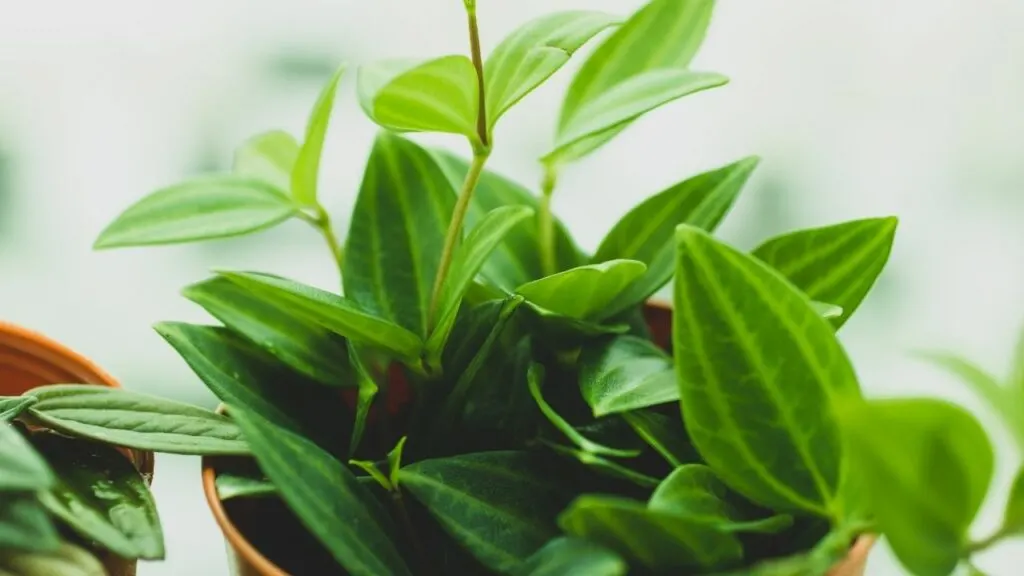
Peperomias are the cutest little compact plants. They are amazing for bringing some greenery to offices or perking up a bookshelf.
These small plants are quite sensitive to direct sunlight but without enough light, they will begin to lose their color. This sensitivity to extra light makes them well suited for artificial lights.
When grown under grow lights they’ll receive all the light they need to put out their fascinating colors while avoiding cosmetic damage caused by direct rays of the sun. Or use grow lights to supplement natural light in areas where it isn’t so bright.
One of my favorite varieties is called Peperomia argyreia, also known as Watermelon Peperomia. The leaves are streaked with silver and grey marking that makes it look like a watermelon.
This stunning foliage will certainly make it stand out in a darker corner. Make sure to provide it with all the right conditions by following our Peperomia argyreia care guide.
4. Spider Plant
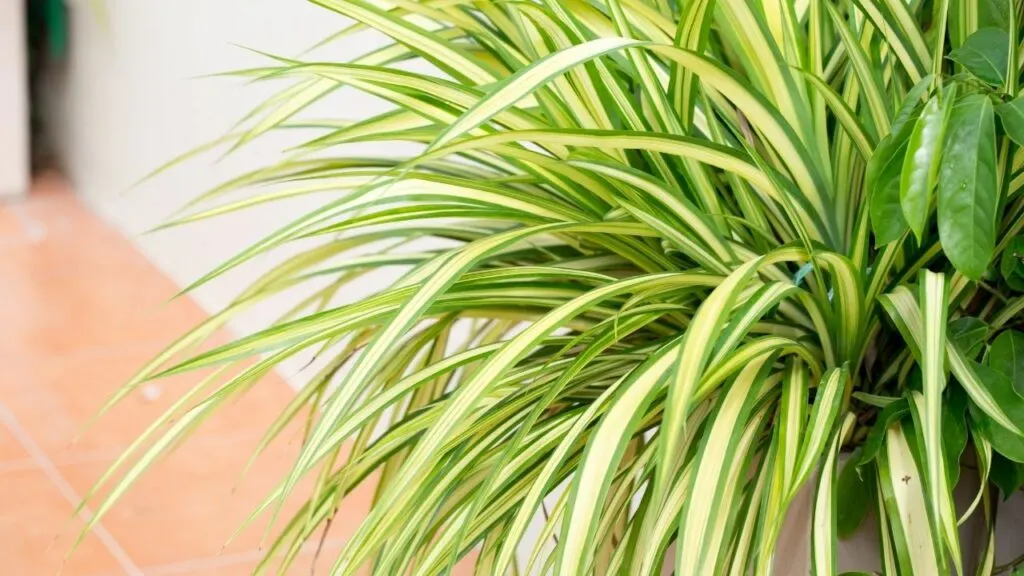
Spider plants are great in almost all light conditions as long as they don’t get direct sun. Their perky leaves shoot out from the base and give the appearance of spiders’ legs.
They come in various colors, sizes, and stages of development. You can purchase a hanging pot that has a messy spider plant full of pups coming off the sides or you can maintain a very neat plant if you prune off the shoots.
These plants can be hung from baskets or potted up on a table or shelf. No matter what your preferences and space availability, there is a spider plant variety for everyone.
The perfect light condition for spider plants is bright indirect light, though they will sometimes make it onto lists of plants that do well in low-light conditions. Although they will survive in low light, they will not necessarily thrive.
Help your spider plants live their best lives by encouraging photosynthesize through grow lights. The grow lights will help maintain active growth so you can propagate those offshoots and make new plants. If you’re not completely sure how to take care of your spider plant, check out our spider plant care guide.
5. English Ivy

Years ago, I killed the first English Ivy I had by not giving it enough light. The ivy looked amazing draping down the bookcase, but barely got any light.
Following general guidance that said they didn’t need much light, I figured the dark bookshelf would be just fine. With time, the plant showed me that it did not like having such little light.
I tried desperately to move it onto the table for a few hours every day so it could catch enough light, but it ended up being too much work. After several months of low-light conditions, the plant was no more.
What I learned from this experience was that even though ivy plants are a great option for low light conditions, they still need some indirect light. After doing some research, I found out that English ivy actually calls for different types of light throughout its growing seasons.
For the strongest growth, provide your plant with moderate light in the spring and summer while it’s actively growing. Then shift to bright, indirect light in the fall and winter.
Instead of redecorating your home every six months to accommodate these preferences, you can use grow lights on a timer to adjust to these changes. You’ll be able to grow English ivy in places with little light and adapt to their changing light preferences by adjusting the timer.
English ivy can be kept small or allowed to grow long and cascade down the pot. This means that you can hang it, let it droop off a shelf, or allow it to climb. Design-wise this makes it a plant that can be placed almost everywhere around the house as long as there’s at least a bit of light.
By adding artificial lights to your setup, you can take advantage of anyplace away from direct sunlight to keep your English ivy. Get extra care tips by reviewing our English Ivy care guide.
6. ZZ Plant
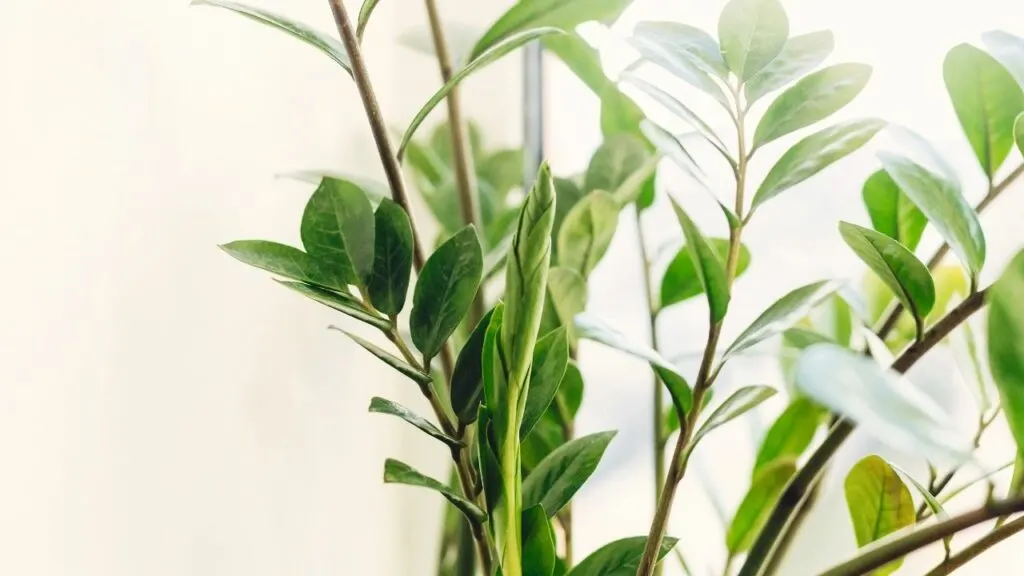
You might have heard ZZ plants be called the unkillable plant. This is because they truly are one of the easiest houseplants to care for. They do well in conditions with low to almost no light and thanks to their tubered roots, they can go without water for a long time.
These hardy characteristics make them a perfect plant to keep in rooms that don’t have very much or any light. Closets and pantries, for example, are places in the apartment that can be underutilized because of the lack of natural light.
ZZ plants will actually get by with almost no light at all, but the growth will be stunted. Without light, the plant will survive, but it won’t be able to grow. Watching ZZ plants put out new growths through the tubers is extremely exciting and not something you want to miss.
So even though they’ll do well with low to almost no light, it’s a good idea to supplement their environment with artificial lights if you want them to keep growing.
While you’re here, check out the ZZ plant care guide to make sure you are meeting all the care requirements.
7.Cast Iron Plant
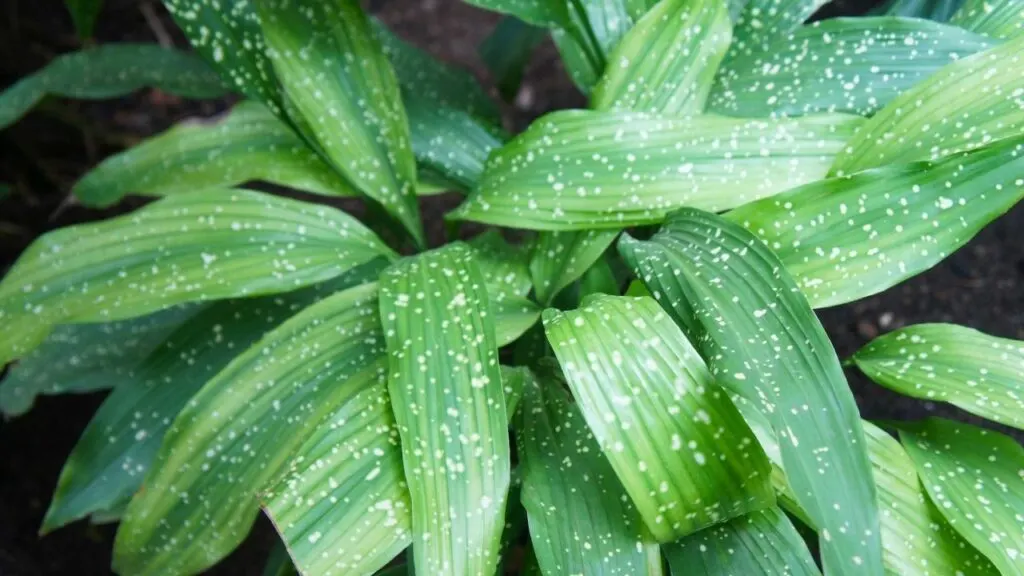
Like ZZ plants, Cast Iron Plants are notoriously easy to take care of. They do well under low light conditions and will be perfectly happy with a couple of hours of artificial lights. They are also quite resistant to dampness that would normally cause other houseplants to develop root rot.
When grown under lights, the conditions tend to be less warm and dry. The dampness caused by lack of sunshine can enable diseases like root rot to take over. If overwatering is something you struggle with. Consider starting off your artificial light experience by growing a Cast Iron Plant to avoid any issues.
Although Cast Iron Plants have a reputation for being extremely hardy, it’s still good to brush up on some care knowledge. Check out our in-depth Cast Iron Plant care guide so you don’t kill your unkillable plant.
8. Dracaena Trifasciata (Snake Plant)
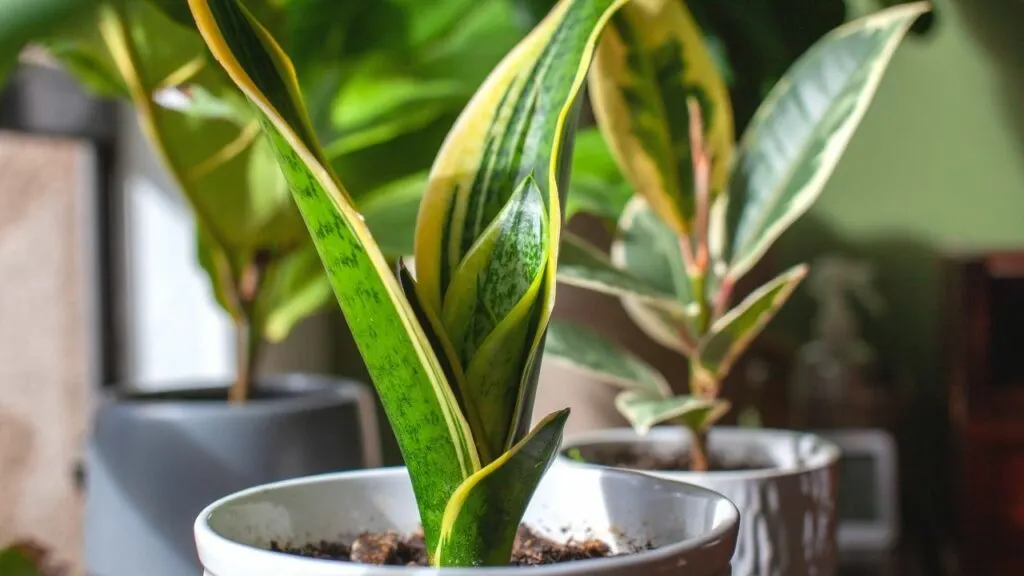
Snake plants are a very popular houseplant because they are quite hardy and tolerant to neglectful plant parents. The unusual leaves shoot out from the soil to the sky in a vertical line. Different varieties of Dracaena will come in different sizes and colors.
I really love the look of snake plants because they are so different and distinct from other houseplants. Instead of the lush, leafy foliage that is habitual from houseplants the defined edges and vertical growth makes gives them an out-of-this-world look.
Dracaenas are one of the most popular houseplants around because of their hardy and resilient nature. They do well in various light conditions (as long as they are kept from direct sunlight) and don’t need careful watering procedures.
These plants will do well in low light conditions as long as they get between 2 to 3 hours of indirect sunlight. If they get less light than that or you want them to grow to their full size of eight feet, you’ll have to provide them with some extra artificial light.
Curious to know what other care requirements snake plants need? This snake plant care guide by Plantophiles will tell you everything you need to know.
9. Aglaonema (Chinese Evergreen)
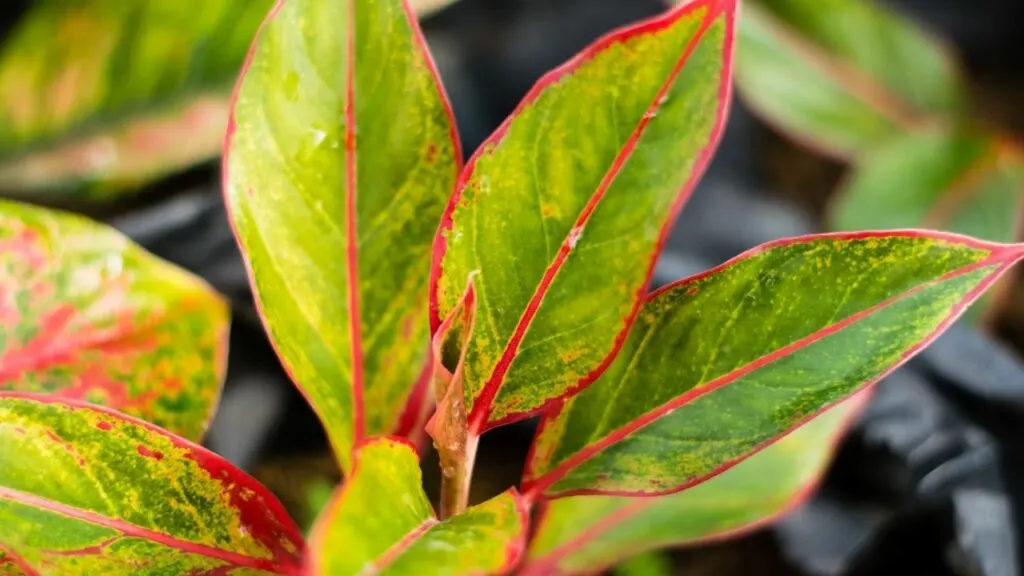
Chinese evergreens are a flowering plant that features brightly colored leaves. There aren’t too many flowering plants that you can grow indoors under grow lights, but given proper care, aglaonemas can do quite well.
This whole plant family is normally grown for the large ornamental foliage that naturally brightens up rooms. Aglaonemas require high humidity but don’t tolerate any direct sunlight. In fact, they do best in indirect light to almost no light conditions and are usually kept in cool dark places that tend to be more humid.
The downside to this is that they don’t receive enough light to flower, so houseplant Chinese evergreens rarely flower.
By growing these plants under artificial light, you can provide them with enough ambient light for them to flower. Not only with the artificial lights give them enough light without burning them, but you can also choose a bulb with more red light, which will actually encourage flowering.
If you’re looking to grow any of the plants in the Aglaonema family, read our Chinese evergreen care guide. You’ll learn all the care tips and get detailed instructions on how to propagate them to get new free plants from the original.
10. Peace Lily
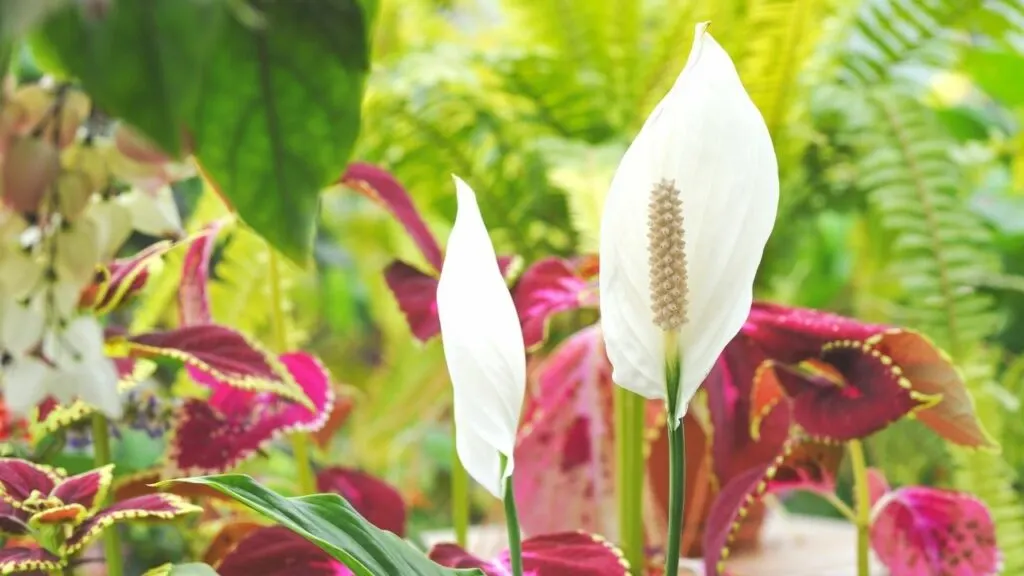
If you’re looking for a flowering plant to light up a windowless room, peace lilies will do great under grow lights. They are more compact and not as colorful as Chinese evergreens, so they provide a more sophisticated look.
Peace lilies are quite hardy and are a relatively easy plant, well-suited for beginner gardeners. They grow best in bright indirect light but will also tolerate low light conditions.
Although it is true that peace lilies won’t necessarily die in low light, we don’t want to see our plants hanging on to life. We want to see them thrive.
If you can’t find a place in your home with bright indirect light, I’d recommend finding a spot with low light and then adding grow lights. Not only will this allow you to provide excellent conditions for your peace lily, but it will also expand the number of places where you could potentially place the plant.
We have a thorough peace lily care guide, so be sure to give it a read so you know all the details of keeping this plant thriving.
11. Geraniums

If you’re looking for a more traditional flower to grow indoors, you should consider geraniums. The flowers come in lots of color options and some varieties even have multicolored leaves. The cheery flowers are a low maintenance way to bring warmth and color to any room.
Geraniums are perennial plants, but in regions with cold weather they are planted as annuals.
Fortunately, these beautiful flowers do great in containers and can be grown as houseplants. They are quite easy to care for but require a good amount of sunshine.
If your home doesn’t get enough light you can use artificial grow lights to keep them thriving. Even better, you can use red light to induce flowering throughout the winter, so you can hang on to a bit of summer during the cold.
Just be aware that if you don’t let them go into a period of dormancy by reducing the amount of light they receive and stopping fertilizing, they will not have the energy to put out new growth.
12. Maidenhair Fern
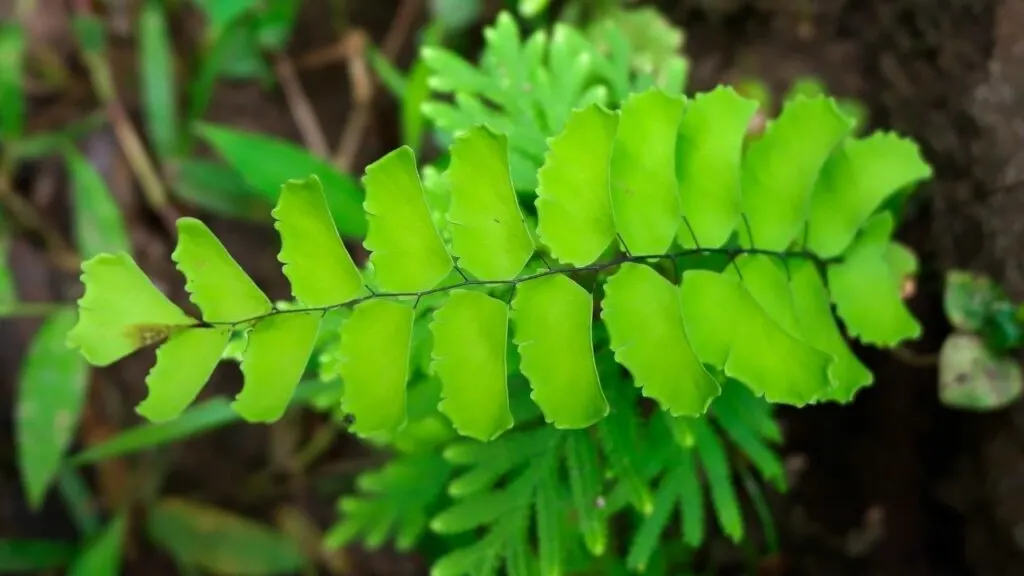
For the longest time, I couldn’t seem to keep a maidenhair fern alive. The first time she got too much sun, which caused scorching on the leaves and caused her to shrivel up.
After a hard trip to remove the damaged fronds and a period of gentle transition, she was moved to the humid bathroom. The problem is there was that she wasn’t getting any sunlight and her leaves turned yellow.
The only solution to keeping a maidenhair fern in my apartment ended up to put artificial lights in the bathroom. The combination of high humidity and moderate light from the grow lights provided the perfect temperature for her to thrive in. After almost six months, she is looking lush and constantly puts out new growth.
If you’re having a hard time finding a good place for sensitive plants like maidenhair ferns, growing them under artificial lights can be a winning solution. It will allow you to keep your plants in humid sunless areas while still getting enough light.
Placing it in a humid bathroom brings greenery into a room that normally doesn’t have any windows.
13. Parlor Palm
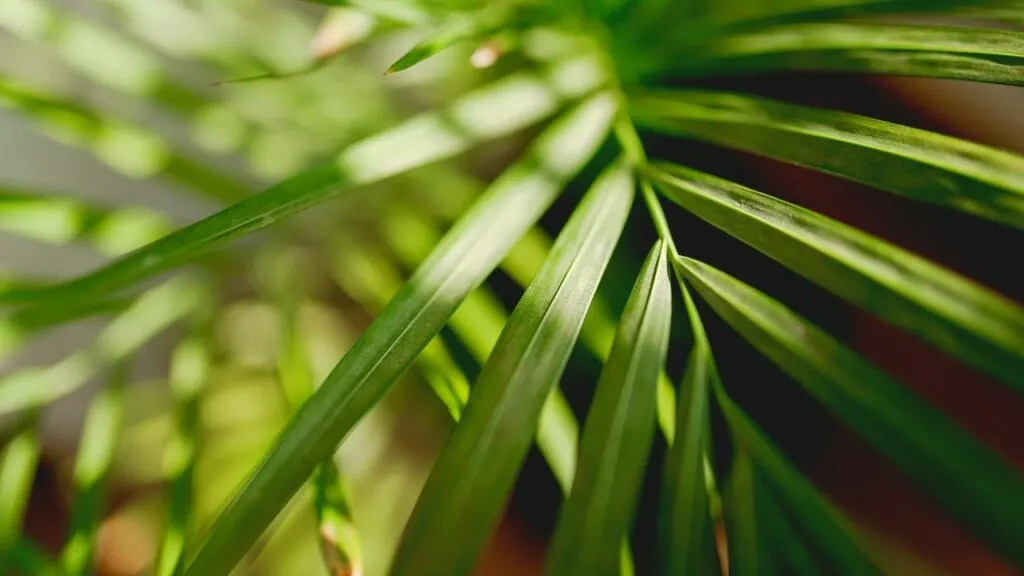
Parlor palms are one of those plants that can instantly transform the aesthetics of the room. Their large fronds, tall size, and deep green instantly bring a tropical feel. Put it anywhere in your living room, for example, so you always feel like you’re on an exotic vacation.
In the wild, palms can become huge towering trees. When kept in containers, however, you can control what size you want to keep them at.
There are also many different varieties, each with its own physical characteristics and care guidelines. This means you can have a tiny palm on a small pot a shelf or a human-sized tree kept on the ground.
The range of sizes gives you plenty of options for growing this beautiful plant inside your home. The one thing to keep in mind is that they won’t tolerate areas with no light.
This makes them perfect plants to grow in partnership with artificial lights. The grow lights allow you to place the palms anywhere they fit even if there’s no natural sunlight.
If you’re interested in growing this large plant in your home, make sure to read up on our parlor palm care guide.
Conclusion
Plants require sunlight to grow but not every room you want to keep a plant in necessarily has sunlight. Fortunately, plants don’t necessarily need sunlight and will also grow under artificial lights.
Many houseplant varieties are naturally found near the forest floor where a thick canopy shields them from direct sunlight.
If you think about these conditions, it makes sense that they don’t like direct light and are quite content with artificial light, which isn’t so intense.
Artificial grow lights allow gardeners to keep plants in rooms with little light or no windows like bathrooms or closets. They also allow growers to make sure their extra-sensitive plants aren’t affected by sunburn.
If you’ve reached this point and have a good idea for what houseplant you wish to grow under artificial lights but are confused by the grow lights themselves, check out this explanation on lighting indoor plants from the University of Missouri.
Before you go, I’ll leave you with one last helpful little tip.
Houseplants grown under artificial lights don’t need so much water. The soil doesn’t dry out so quickly since it’s not so warm under artificial light. Now have fun exploring all the new possibilities for where to put your houseplants.

Daniel has been a plant enthusiast for over 20 years. He owns hundreds of houseplants and prepares for the chili growing seasons yearly with great anticipation. His favorite plants are plant species in the Araceae family, such as Monstera, Philodendron, and Anthurium. He also loves gardening and is growing hot peppers, tomatoes, and many more vegetables.

